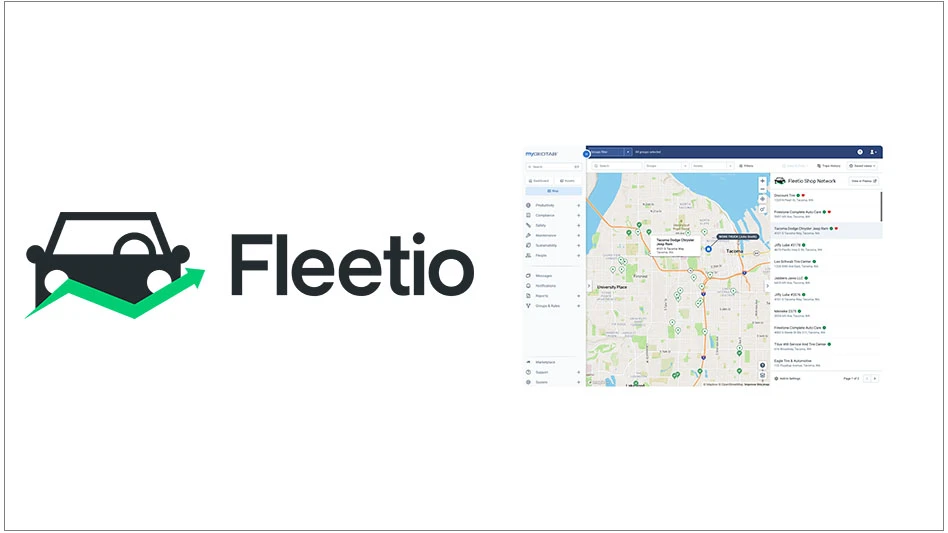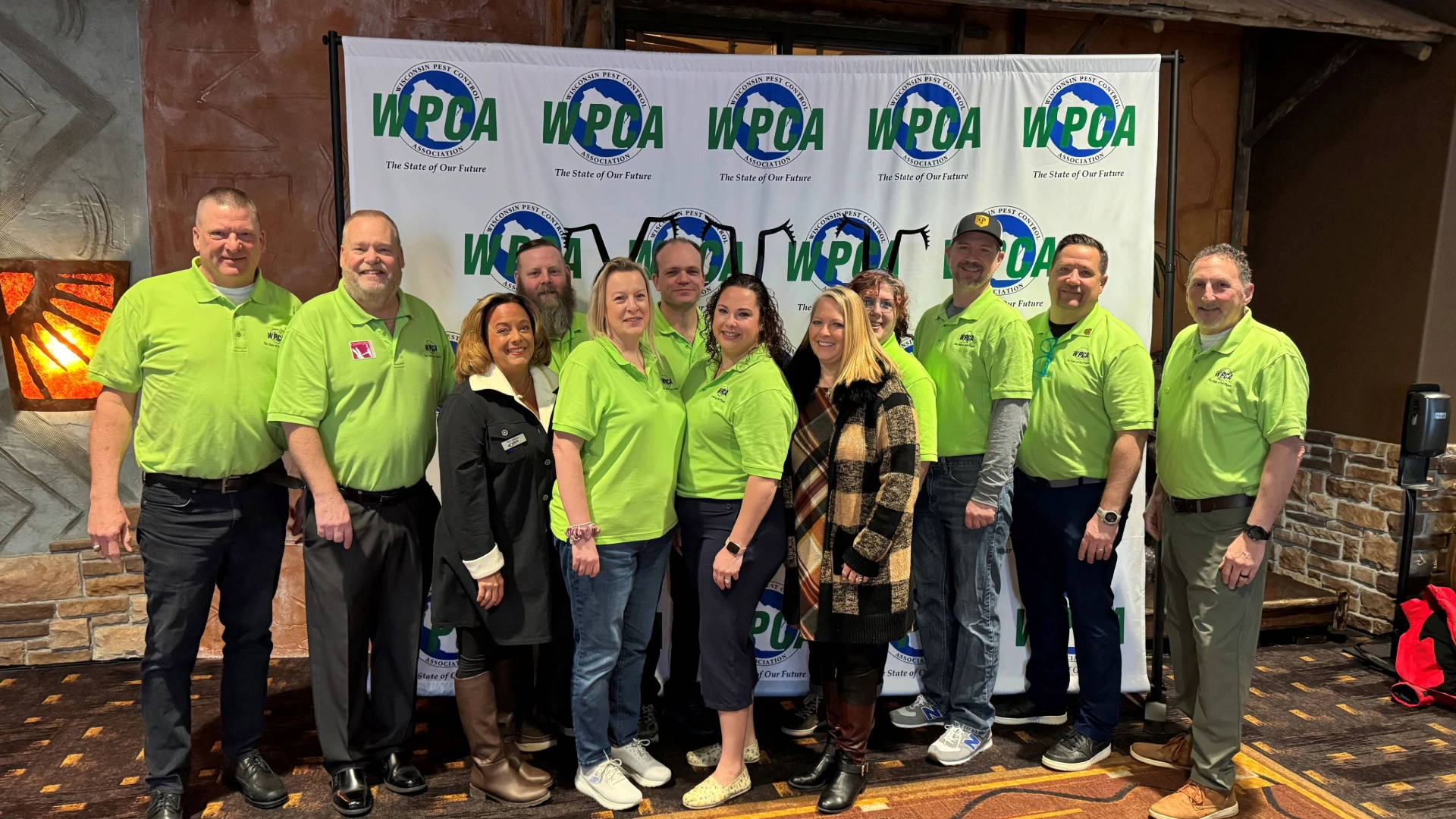 Eastside Exterminators is led by Alex Altizer (left) and Deanna Townsend.
Eastside Exterminators is led by Alex Altizer (left) and Deanna Townsend.How does a business jump 16 places on PCT’s Top 100 List in a single year — the greatest increase of any of the companies on the 2016 listing — and 27 places over the last two years? Seattle-based Eastside Exterminators President Deanna Townsend and CEO Alex Altizer, who are co-owners of the company, believe their rise from #91 for 2014 (with 2013 revenues of $6,400,000) to #80 for 2015 ($8,097,000 in 2014) to #64 for 2016 ($10,200,000 in 2015) can be credited to “the passion and the people.”
The two, who were married at the time, purchased Eastside in 2000 from Deanna’s father, Ralph Townsend Sr. At that time, the company had nine employees. Over the next 14 years, they gradually added workers, reaching the 40-employee mark in 2014, then jumping to 80 employees over the next two years, hitting a total of 87 this year.
CHALLENGES OF GROWTH. Because of this accelerated growth, Townsend and Altizer have adapted their management practices. “For the first 10 to 12 years, we were just working in the company,” Altizer said. “For the last four to five years, we’ve been working much more on the company.” To be able cover all aspects of the growing business — from having more employees to more paperwork, trucks, equipment maintenance, etc. — the pair have had to “divide and conquer,” utilizing their individual skills and talents for the betterment of the company.
Although Townsend and Altizer are now divorced, they work closely together managing the company, with Altizer’s strengths being that of the big picture and vision, and Townsend focusing her expertise on management of the day-to-day work and staff training. Although Townsend’s title is president, her real gift is “talent and acquisition,” Altizer said. “A lot of the people are here because of Deanna’s talks; they see the passion and the vision and want to be part of it.” Additionally, he said, “She is exceptional at digging into the weeds, knowing what needs to be done, and passing it on to the technicians.”
It is this melding of the vision and the daily work, and of the personal strengths of Altizer and Townsend, that have led to success. In 2004-05, they wrote down their vision — where they wanted the company to go. With that as a guide, they focused on the daily work that goes into making it happen. “It’s melding those together; it’s a give and take,” Altizer said.
“We wouldn’t have been able to do it without each other,” Townsend added. “We’re very different people, totally, but we compromise to do what is best for the company.”
It was in knowing their different but equal strengths that was the reason behind Townsend’s father selling them the business as a 50/50 split, she said. And he didn’t just sell them the business, then move on. Rather, she said, “We were really fortunate in the fact that it was originally sold to us as a five-year mentorship,” enabling him to show them all the things he’d done and learned through his 30 years. “He had built a solid foundation, and he did all the right things when he passed it to us,” she said.
From that foundation, Townsend and Altizer have built Eastside Exterminators into the successful business it is through a combination of unique service, focused training and a committed workforce.
It is the company’s rodent service that sets them apart. Rats are the number one pest of the Pacific Northwest, Altizer said, so, like many pest control businesses in this area, rodent control is its number one service, accounting for 68% of its revenue. But that is where the similarities end. With Eastside’s other pest services bringing in 32% of its overall revenue, the difference comes from its insulation services. Having begun as an extension of the company’s rodent program — of which it is still an integral part — the service also has grown to become a separate division, Eastside Insulation, which now provides a stand-alone service as well.
THE EASTSIDE DIFFERENCE. Eastside will not sell a one-visit, trap-based rodent service. Rather, its program is focused on changing the behavior of the rodent — determining and blocking places the rodent is getting in, making preventive site or building modifications in areas it is likely to try next, identifying and eliminating conducive conditions, and putting out “protection stations” to trap rats as they seek new entry points. “It is true grassroots IPM,” Townsend said.
Thus, the program incorporates five steps, each of which is performed by a different person, specifically trained in that area: the initial rodent inspector, the repair technician, the follow-up inspector, the insulation specialist, and the pest control technician. It all begins with a thorough inspection of the house and property, for which the inspector spends about three hours at the home. “It’s thorough and invasive,” Townsend said. From the findings of the inspection, she said, “we come up with a plan to get the rodents out of your house.” Then the repair technicians, who are trained in rodent-proofing, take action, providing exclusion based on the inspection results. Traps are also set to capture any rodents that are already in the home. By sealing entry points, setting traps, and modifying the structure to drive the rats into the traps, the program forces a behavior change in the rodents, Townsend said.
Once the repairs are made, a follow-up inspector comes in, checking and emptying traps, inspecting repairs, ensuring that everything possible has been done to get existing rodents out and keep new ones from coming in. The insulation division then provides the clean-up; then the pest control technician begins recurring protection services, including placement and maintenance of an exterior system to keep the home rodent-free.
APPRENTICE TRAINING. Eastside follows an apprenticeship process for the training and promotion of its workers into the various positions, with training an essential aspect every step of the way. Everyone gets at least 26 hours of training a year, with some getting up to 60 hours of training. New hires start in exclusion, so they understand how the rodents are getting in and why exclusion is so important. From there they can move to follow-up inspector then to the initial rodent inspector position, Townsend said. And workers can move back to a former position if they, or Eastside, feel the change of position was not the right fit. “It’s all about getting the right person in the right seat, asking them, ‘What do you want to do? What makes you happy?’” Altizer said.
EXPLAINING THE WHY. With the extent of the inspections and services and number of workers involved, Eastside’s rodent program takes more effort and expense than a standard rodent service. But if the homeowner understands the “why” behind the program, the sale should quickly follow, Townsend said. And it is Eastside’s extensive training and apprentice program that enables its people to, themselves, understand, then explain the need for the changing of the rodents’ behavior and how the company’s program makes this happen.
It all revolves around explaining how and why the rodents are getting in, how the program will change the rodents’ behavior to stop it, then how the ongoing service will maintain the program and capture any rodents that do slip by. “When you explain and educate the homeowner, they have no reason to say no,” Townsend said.
When she and Altizer took over the company, Townsend was the primary serviceperson. She told customers, “I am very passionate about what I do, about getting rats out of your house,” she said. “We don’t just block where rodents are getting; we try to solve your problem, now and for the future.”
“I get excited,” she said. “I’ve helped so many customers.” These days, Townsend works to pass on that passion and excitement to each employee. It has become a company culture that is reflected in its motto: “Get it. Want it. Have the Capacity to do it.” (GWC) “Get it and want it are non-negotiable; the capacity can be learned,” Townsend said. In implementing the philosophy, she added, “We empower people to make decisions, letting them have the autonomy to make mistakes — just not repetitive mistakes.”
So how does a company increase its revenues by more than a third and its ranking by 27 spots in two years? “It’s all about the passion and the people,” Altizer reiterated. Everyone in the company knows the one-year, three-year, and eight-year plans, understands the vision, and is committed to the program. “Everyone is in the same boat and rowing in the same direction, so we’re not going in circles,” he said, adding, it all goes back to the understanding of “the why.”
The author is a PCT contributing writer and can be contacted at Llupo@gie.net.

Explore the Convention Extra 2016 Issue
Check out more from this issue and find your next story to read.
Latest from Pest Control Technology
- NPMA Awards David Cooksey PestVet, Policy Person of the Year
- Pink Pest Solutions Opens New Kansas City Office
- GA Dept. of Ag Experts Urge Reporting of Yellow-legged Hornet Embryo Nests
- Lloyd Pest Control Treats 'Kitchen Nightmare' Cockroach Infestation
- Beach Pest Service Opens New Office in Hampstead, N.C.
- NYC PCO Growing Business with Focus on Corporate Clients
- Massey Services Promotes Silver, Crespo to Director Roles
- Recurring Services Model, Wildlife Offerings Lead to Impressive Growth for Tailor Made





